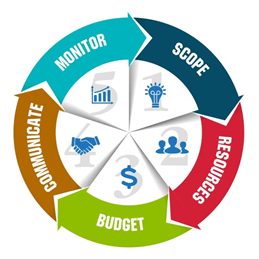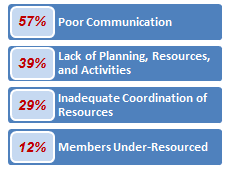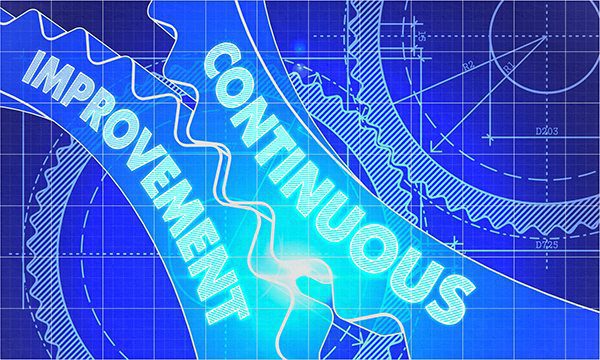Legal Project Resources
In our previous blogs, we discussed the steps we need to take for the successful planning of legal project management and most importantly, Step #1 – Scope of Work. We talked about how you need this plan to serve as a “road map” and include your overall goals and objectives. The next step we will cover is Resources … Step #2 in our infographic below.

Determining all the Resources necessary to work a large matter, such as a complex litigation, entails several different areas. The first task to accomplish should be choosing the team leads that will oversee each aspect of the project. While there may be many other people involved, the core project team itself should manage all other team members. For instance, the discovery phase of a litigation requires a single point person in charge of all the activities that fall under each task…the technology support, the collection group, the EDD processing experts, the 1st pass reviewers, the 2nd pass team for privilege and technical review, and the final production reviewers. And while there are many important people involved in this critical process…having one leader on the project team allows for a single resource to represent this specific team by reporting on their progress and identifying risks. The project teams will meet regularly to report to their leader on the progress of their respective areas of responsibility.
Creating the core project team and identifying all the other workers on the litigation is an excellent start to making sure all areas are covered and there is accountability throughout. Just like any commercial project, there are other resources required to run a successful legal matter such as – experts, time, task assets, capital, travel, consumables, and technology. All of these must be taken into consideration so that when needed, the required resources have been planned and the channels of communication have been pre-defined.

Some of the major factors that can lead to project failure involve Resource Planning and Communication, according to a survey run by IT Cortex:

According to Project-Management.com, one of the top causes for failure stems from the lack of adequate resources to accomplish the project goals. In so doing, the resulting struggle for resources creates competing priorities. This was backed up by the Chaos Report indicating a “Lack of Resources” accounted for almost 11% of respondents’ project failures.
Never underestimate the power of building a strong project team as a powerful resource. There is a mindshare that is built by making people accountable…but more importantly, no one person wants to contribute in a negative way. The project section leaders push to make sure their teams perform at a level that ensures the reports will show positive results. Top-notch teams tend to develop a cohesive and collaborative group mentality that drives them to help each other and contribute to the betterment of the entire team. Occasionally, there is a team resource that is not contributing or pulling their weight, but strong leadership and frank conversations can typically reverse this and get the entire team performing at peak productivity.
Anticipate the unknown changes along the way; it is critical to remain flexible. No plan is ever perfect, especially the first several attempts it is used. Changes come in many forms such as team members transitioning, dates changing, and matter requirements getting added.
 With a solid project plan in place, it can be simple adjustments to increase its effectiveness. Having a common technology platform that everyone works within makes it easier to immediately update the entire team regarding any changes or updated information. It is clearly not an exact science; it is a skill…an acquired skill that is practiced over time. A plan allows for a more structured method that can be documented with changes in scope, team, and/or budget. Ultimately, creating a project plan template for repeated use will create a “documented” process. This structured process creates an approach that will prove to be the most defensible position.
With a solid project plan in place, it can be simple adjustments to increase its effectiveness. Having a common technology platform that everyone works within makes it easier to immediately update the entire team regarding any changes or updated information. It is clearly not an exact science; it is a skill…an acquired skill that is practiced over time. A plan allows for a more structured method that can be documented with changes in scope, team, and/or budget. Ultimately, creating a project plan template for repeated use will create a “documented” process. This structured process creates an approach that will prove to be the most defensible position.
Process automation, as a business strategy, aides by optimizing practices to contain costs and save time.

Advanced legal project management software is one of the most effective ways to provide greater management capabilities. Having advanced technology solutions take the lion-share of the administrative burden, allowing team leaders to focus on their task load without incurring additional staffing costs.
The introduction of automated processes into any legal organization can have a huge impact on the efficiency of their practice of law and the successful completion of any project. By implementing automation solutions teams can accelerate operating practices and deliver reliable results from pre-established and honed processes.

The top three major benefits of legal process automation are that it creates team efficiency, increases data value, and promotes compliance.
Process automation also benefits business units by providing data required to make critical decisions. Rather than team members being surprised by tasks that weren’t executed correctly, teams spend time adjusting, perfecting, and discussing new strategies to improve workflow. When a custom workflow is created, approval responsibilities can be assigned to anyone involved in the matter. Business process/workflow technology can help set up hierarchies within teams to ensure the right people oversee the right tasks.
Conclusion – Legal Project Management Resources:
A strong legal project management plan can also provide a valuable marketing resource. Sharing a matter project plan with the other business units or a client should be used as a marketing tool to differentiate your legal group from others. A well-thought-out plan covering scope, required resources, and budget commitments can eliminate doubts and fears created by unpredictable project overruns. Tech-savvy businesses demand a deeper understanding of the expertise and engagement level brought by each legal team that will be involved. For law firms, it is a willingness to work in a more transparent, predictable, and collaborative manner that differentiates a firm to withstand the current trend of consolidation. As a legal department, this sharing of resource allocation instills confidence that the project possesses the necessary inputs to accomplish the tasks outlined in the Scope.
The goal is to provide a continuous improvement process that ensures the next projects will always benefit from the lessons learned from the past.

In our next blog, we will take a look at Step #3 in the process of successful legal project management, Budgeting. We will discuss costs, the use of technology to monitor and report, UTBMS task code standards, and more. It is imperative to plan a budget established within the Scope of Work, then continually track and report on its progress.
To read our previous post on Scope, click here.





